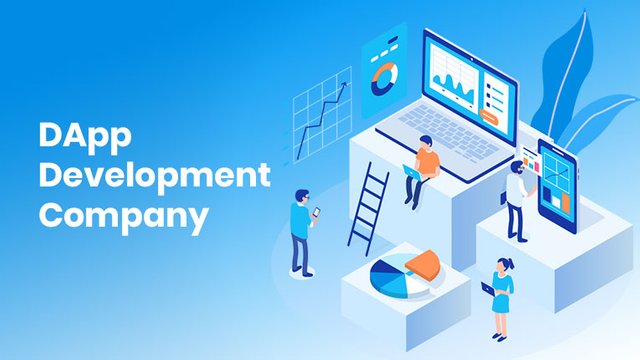A Comprehensive Guide to DApp Development

Decentralized Applications, or dApps, are a disruptive force in this crypto space. These utilize blockchain technology to deliver scalable, transparent, and effective solutions in diverse industry verticals.
dApp development is in great demand today due to its ultimate potential. Entrepreneurs are now leveraging the decentralized apps for improved cost-effectiveness, robust security, and transparency.
Here’s your comprehensive guide to dApp development, highlighting its meaning, development steps, and costs involved.
So, let’s get started!
An Overview of dApps
Decentralized applications, or dApps, are software programs that break away from the traditional model. Unlike familiar apps that rely on a single company's servers, dApps run on a distributed network of computers. These are resistant to censorship and shutdowns because they lack a central authority. They also offer greater transparency, as transactions and data are stored securely on a blockchain, a public ledger accessible to all. dApps act as building blocks for a future web where users have more control over their data and interact directly with services without relying on middlemen.
Advantages of Decentralized Applications
dApps offer a wide range of advantages that set them apart from traditional applications. Below are some of the key benefits:
• Enhanced Security & Transparency
dApps leverage blockchain technology, which stores data across a distributed network of computers. This makes it extremely difficult to tamper with data or hack the system, resulting in a more secure environment for users. Additionally, all transactions on the blockchain are publicly viewable, fostering transparency and trust within the dApp's ecosystem.
• Censorship Resistance
Since dApps aren't controlled by any single entity, they are resistant to censorship. No government can take down a dApp or restrict access to its functionalities. This ensures the application remains available to users globally.
• Increased User Control
With traditional apps, user data is often stored on company servers, leaving users with limited control. dApps empower users to manage their own data. Interaction with the dApp often happens through crypto wallets, giving users more control over their digital assets and identity.
• Improved Reliability
Decentralized applications are not susceptible to single points of failure. If one computer on the network goes down, the dApp continues to function because other computers maintain the network's operation. This ensures greater uptime and reliability compared to applications relying on centralized servers.
• Potential for Disruption
dApps have the potential to disrupt various industries by enabling peer-to-peer interactions and eliminating the need for intermediaries. For example, dApps can revolutionize finance by creating new opportunities for lending, borrowing, and trading without relying on traditional financial institutions.
Steps to Streamline Your dApp Development Process
Building a dApp involves some of the essential steps, including:
• Conception and Planning
First, you need to identify a problem your dApp can address and its target audience. Carefully plan the features and functionalities it will offer, and choose the blockchain platform it will be built on. Popular options include Ethereum, EOS, and Tron, each with its own pros and cons.
• Smart Contract Creation
Smart contracts are written in languages like Solidity, which are self-executing contracts that reside on the blockchain and define the dApp's core logic and rules. Security audits play an essential role in ensuring the code is flawless and functions as intended.
• Building the User Interface
This is where users interact with your dApp. It is crucial for you to plan and design a user interface that gives them a smooth and intuitive user experience. You must utilize web technologies like HTML, CSS, and Javascript to form the foundation and combine them with frameworks like React or Vue.js.
• Backend Integration
While dApps don't rely on traditional servers, they may need to interact with blockchain nodes or other decentralized services. APIs facilitate this communication, allowing the dApp to retrieve data and process transactions seamlessly.
• Deployment & Testing
Once development is complete, rigorous testing is crucial. This phase identifies and eliminates any bugs or vulnerabilities that could compromise the dApp's security or functionality. Finally, the dApp is deployed onto the chosen blockchain platform, ready to serve its users.
Cost of developing dApps
An estimated cost to build dApps may be between $60K and $80K with some basic features. dApps with an advanced feature set may cost nearly $150K or more. The exact development cost is dependent on several factors, including:
• Complexity of the project
• Business sector
• Types of blockchain networks
• Integration with other systems
• Development team and location
Wrapping Up
To put it simply, dApps are transforming the industry since they bring trust and efficiency to the crypto space. These also play an essential role in gaining a competitive edge. dApp development presents a unique set of prospects for entrepreneurs as technology advances.
In addition, seeking a professional team of experts can help you navigate the field in a hassle-free manner. That’s where Coin Developer India can come to your rescue!
It is a leading dApp development company that has a team of blockchain experts who can help you create dApps as per your specific business requirements. Connect with them to kickstart your dApp journey now!
Contact us: +91 7014607737